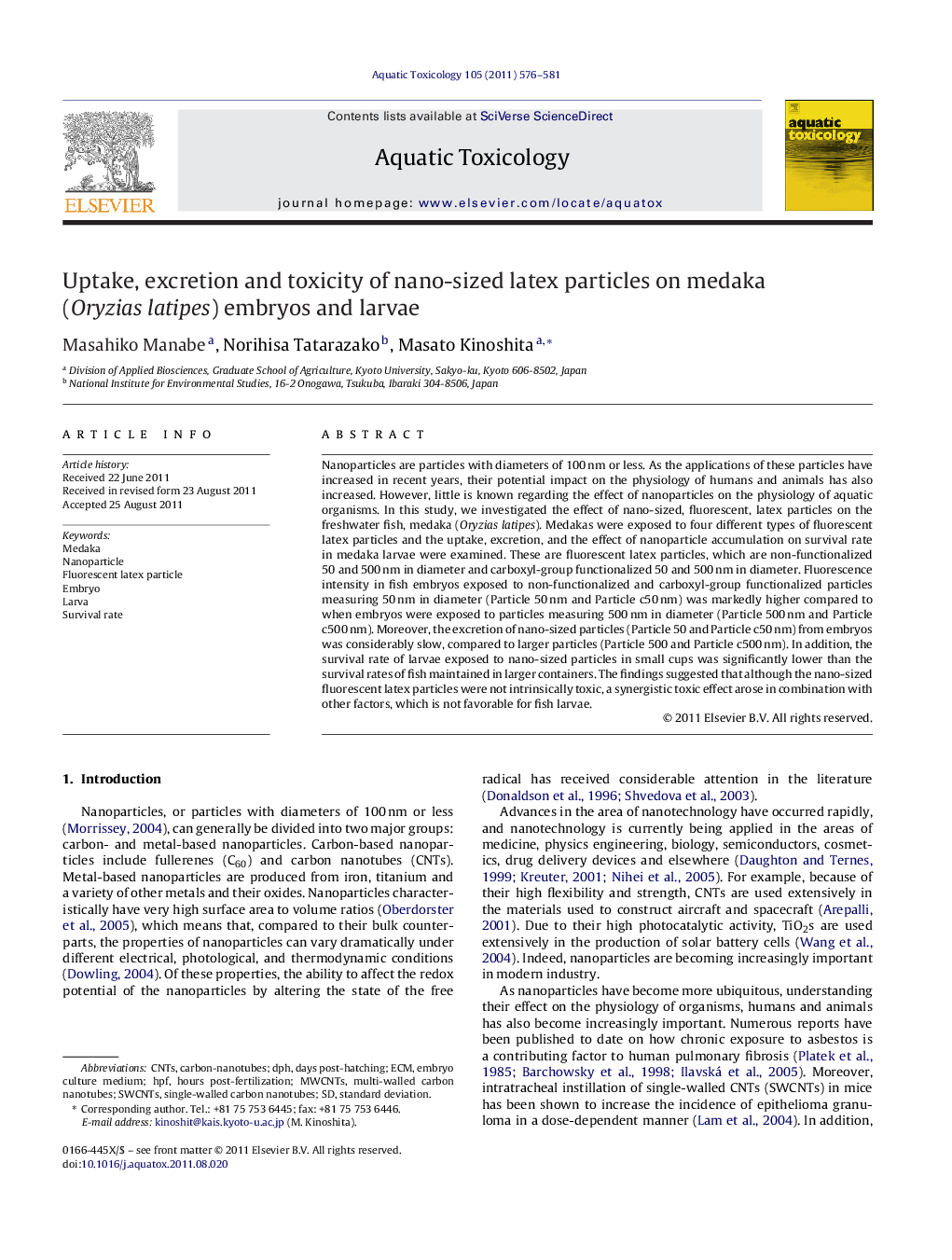| Article ID | Journal | Published Year | Pages | File Type |
|---|---|---|---|---|
| 4529845 | Aquatic Toxicology | 2011 | 6 Pages |
Nanoparticles are particles with diameters of 100 nm or less. As the applications of these particles have increased in recent years, their potential impact on the physiology of humans and animals has also increased. However, little is known regarding the effect of nanoparticles on the physiology of aquatic organisms. In this study, we investigated the effect of nano-sized, fluorescent, latex particles on the freshwater fish, medaka (Oryzias latipes). Medakas were exposed to four different types of fluorescent latex particles and the uptake, excretion, and the effect of nanoparticle accumulation on survival rate in medaka larvae were examined. These are fluorescent latex particles, which are non-functionalized 50 and 500 nm in diameter and carboxyl-group functionalized 50 and 500 nm in diameter. Fluorescence intensity in fish embryos exposed to non-functionalized and carboxyl-group functionalized particles measuring 50 nm in diameter (Particle 50 nm and Particle c50 nm) was markedly higher compared to when embryos were exposed to particles measuring 500 nm in diameter (Particle 500 nm and Particle c500 nm). Moreover, the excretion of nano-sized particles (Particle 50 and Particle c50 nm) from embryos was considerably slow, compared to larger particles (Particle 500 and Particle c500 nm). In addition, the survival rate of larvae exposed to nano-sized particles in small cups was significantly lower than the survival rates of fish maintained in larger containers. The findings suggested that although the nano-sized fluorescent latex particles were not intrinsically toxic, a synergistic toxic effect arose in combination with other factors, which is not favorable for fish larvae.
► We investigated dynamics and toxicity of nanoparticles on medaka embryos and larvae. ► We used four types of fluorescent latex particle because of simplicity to detect them. ► Particles of 50 nm in diameter infiltrated easily but were hard to excrete. ► Exposure to nanoparticles and single rearing in a small cup increased mortality significantly.
